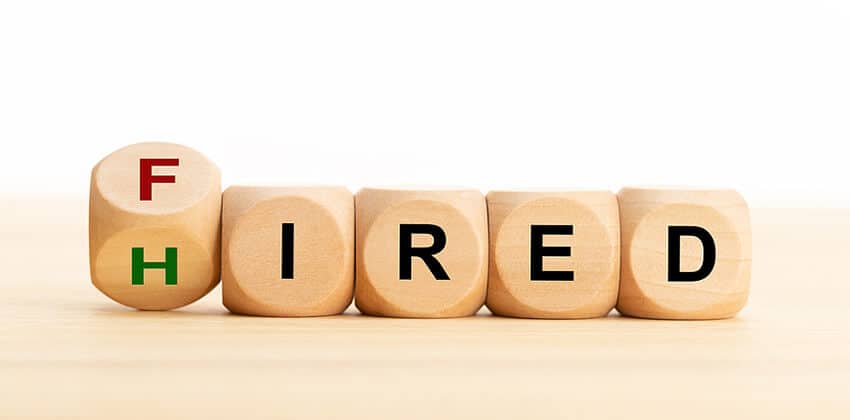
You just spent what feels like hours crafting and creating the world’s most perfect and professional email! Time to hit send!
But before you do, give it one more read and take a look at the ending of your email. Have you summed things up and given it a professional closing that doesn’t sound like a threat?
It’s not always as easy as it sounds. What you think sounds professional and respectful can come across as negative and sarcastic. Here’s how to end an email in any situation.
Why You Should Include an Email Closing
Though you may have covered everything in your email as professionally as possible, your closing is just as crucial as every other word in your message.
Think of it like this: when you finish a conversation, you don’t just walk away or hang up the phone. You finish the conversation with some pleasantries (hopefully!). The same goes with an email. You’re ending the conversation instead of just hanging up.
What to Consider for Your Closing Line
As you construct your closing, keep in mind the situation and your relationship with the recipient. The way you end an email for a meeting request isn’t the same as the way you’d end a thank-you note for an interview.
Likewise, how you end an email to the CEO is probably not the same way you’d end an email to your supervisor, an interviewer, or a coworker.
Email Closing Lines (Examples)
The first part of your closing is a line or two that summarizes the email and includes what comes next (if necessary).
For example, after an interview, you might say something like:
Thanks again for your time, and I look forward to meeting the rest of the team.
But if you’re sending the minutes from a meeting to your boss, you might go with:
I’ve attached the meeting minutes below. If you have any questions or concerns, please let me know.
Every email will likely have a unique closing based on the situation and the person.
9 Examples of Professional Email Sign-Offs
Just as each closing will be unique, so will your ending. How you sign off to your boss is likely not the same as how you sign off to your coworkers.
1. Sincerely
An absolute classic, you can’t go wrong ending your email with “sincerely.” While a bit formal, it’s safe as it gets and is unlikely to ruffle any feathers.
2. Warmly
A step up from “sincerely,” “warmly” is another solid choice. However, as safe as it is, it may not be appropriate for every situation or recipient. Some may consider this a little too familiar or casual for a work email.
3. Best/Best Regards
“Best” and “best regards” are also generally safe choices no matter the recipient. However, it may not always be the right choice for certain circumstances. For example, if you’re delivering bad news, “best” may not be the best choice.
4. Thanks/Thank You/Many Thanks
Always a safe choice, any variation of “thanks” will likely be appreciated.
5. Thanks in Advance
This variation of “Thanks,” though, may not always be the right choice. While it’s nice for you to thank someone in advance, this closing implies that the recipient has already agreed to whatever it is you’re asking. If that’s not the case, you might want to choose a different email ending.
6. I Appreciate…
When you truly appreciate something, this is a fantastic ending. However, make sure “appreciate” is the appropriate sentiment before using this ending.
7. Cheers
“Cheers” is easily the most controversial choice on this list! Why?
Some people think that “cheers” is a perfectly acceptable email ending. It’s upbeat, optimistic, and, well, cheery! Others, however, feel that this is too informal for a work email and best left out of your work emails.
8. Have a Great Day/Week/Weekend
Wishing someone a great day/week/weekend or even evening is a solid way to end an email. It’s hopeful and sends well wishes to the recipient.
9. Hope This Is Helpful
This email ending is a great choice when you’re trying to help somebody out! It also leaves the door open for them to contact you again should they need it.
9 Email Endings to Avoid
And of course, there are email endings to avoid. While there’s nothing particularly “wrong” with any of these endings, they are better left for your friends and family, not your work emails.
1. Thx/Thanx
This is the kind of closing that will get your email noticed and remembered—for all the wrong reasons! Not only is it far too informal for a work email, but it also looks like you couldn’t bother to give your email a quick once-over before you sent it!
2. Later
This ending is more like the end of a book’s chapter than the end of an email! It’s too casual and doesn’t add any value to the rest of the message.
3. Talk Soon
At first glance, there’s nothing wrong with this closing. However, in some situations, this could be seen as a threat. While it might be better to skip this ending, if you feel it’s the right choice, you could add a “hope to” to help it seem like you aren’t threatening the recipient.
4. Hugs or XOXO
This never belongs in a professional email.
5. Emojis
Another controversial entry, emojis sometimes have their place in an email.
As with every other ending, start by considering the audience and the situation. Then, if you feel that emojis are acceptable, feel free to throw in one or two, and stick with professional ones, like 🙌 , 😀 , or 👋 .
6. Respectfully
At first glance, there seems to be nothing wrong with this closing. It’s professional, bland, and perhaps a bit stiff. Ironically, though, “respectfully” could come across as disrespectful!
Depending on the tone of your email and the situation, “respectfully” could come across as sarcastic. The recipient may read this and think you’re saying, “agree to disagree.” To avoid any miscommunication, it may be best to skip this one.
7. Have a Blessed Day
Some recipients may interpret this as having religious undertones. Whether you mean it or not, it’s generally best to skip this email ending.
8. Sent From My Device
Auto signatures are, of course, a huge time-saver! However, having the default “sent from my device” isn’t the best look these days.
For starters, most people expect that you’ve disabled this function. But if you’re still sending messages that include this ending, people may think you don’t know how to navigate technology. And you might be sending the wrong message about your professionalism. If you’re always on your phone, are you ever in the office?
9. Thanks a Bunch
This is one of the “thank you” variants you should consider skipping. While thanks are almost always appreciated, “a bunch” is not quite as professional as other options.
Signing Off
Though the ending of your email is only one part of it, a professional sign-off plays a surprisingly important role in how well your email is received—or isn’t! No matter what you’re trying to say, always consider the situation and recipient to help you sign off the best way possible.
Don't forget to share this article with friends!




